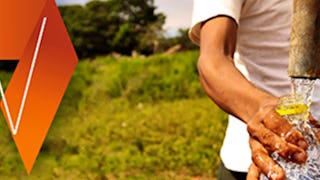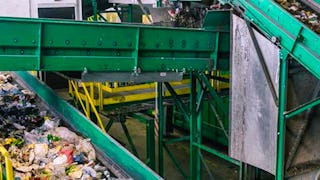Die Sanierung der zahlreichen Grundwasserkontaminationsstellen ist eine bedeutende und komplexe Herausforderung für die Umwelt. Die Umweltindustrie ist ständig auf der Suche nach Sanierungsmethoden, die sowohl effektiv als auch kosteneffizient sind. In den letzten 10 Jahren gab es erstaunliche, wichtige Entwicklungen in unserem Verständnis der wichtigsten Attenuationsprozesse und Technologien zur Bewertung natürlicher Attenuationsprozesse sowie eine veränderte institutionelle Sichtweise darüber, wann und wo die überwachte natürliche Attenuation (MNA) angewendet werden kann. Trotz dieser Fortschritte ist die Wiederherstellung von anthropogen kontaminiertem Grundwasser für eine uneingeschränkte Nutzung weiterhin eine Herausforderung. Aufgrund einer komplexen Mischung aus physikalischen, chemischen und biologischen Einschränkungen, die mit aktiven In-situ-Sanierungstechnologien verbunden sind, liegt der Schwerpunkt seit langem auf dem Verständnis natürlicher Prozesse, die Grundwasserverunreinigungsfahnen abschwächen. Wir werden auf grundlegenden umweltwissenschaftlichen und umwelttechnischen Prinzipien aufbauen, um herauszufinden, wie MNA am besten als praktikable Behandlung für Grundwasserverunreinigungsfahnen eingesetzt werden kann. Darüber hinaus werden wir uns mit der Geschichte dieser Technologie befassen und Vorhersagen über ihre weitere Entwicklung treffen.

Genießen Sie unbegrenztes Wachstum mit einem Jahr Coursera Plus für 199 $ (regulär 399 $). Jetzt sparen.

Natürliche Abschwächung von Grundwasserverunreinigungen: Neue Paradigmen, Technologien und Anwendungen



Dozenten: Pedro Alvarez
18.266 bereits angemeldet
Bei enthalten
(510 Bewertungen)
Kompetenzen, die Sie erwerben
- Kategorie: Wasserqualität
- Kategorie: Laborforschung
- Kategorie: Chemieingenieurwesen
- Kategorie: Mikrobiologie
- Kategorie: Chemie
- Kategorie: Umwelttechnik
- Kategorie: Mathematische Modellierung
- Kategorie: Umweltwissenschaft
- Kategorie: Wasserressourcen
- Kategorie: Biochemie
- Kategorie: Hydrologie
- Kategorie: Analytische Chemie
- Kategorie: Umweltüberwachung
Wichtige Details

Zu Ihrem LinkedIn-Profil hinzufügen
9 Aufgaben
Erfahren Sie, wie Mitarbeiter führender Unternehmen gefragte Kompetenzen erwerben.

In diesem Kurs gibt es 9 Module
Willkommen zum Kurs! In der Rubrik Kursübersicht finden Sie allgemeine Informationen über den Kurs sowie Hinweise zur Navigation im Kurs. In den Vorlesungen dieser Woche werden wir mit der Geschichte beginnen. Wir befassen uns mit der allgemeinen Geschichte der Grundwassersanierung und dann mit der spezifischen Geschichte von MNA mit einer Liste der wichtigsten Protokolle von 1994 bis 2015. Zu den Spezialthemen gehören die aktive Sanierung im Vergleich zu MNA und die neuen MNA-Technologien sowie die Frage, wie Abbau, Lagerung und Verdünnung zur MNA-Geschichte gehören.
Das ist alles enthalten
9 Videos4 Lektüren1 Aufgabe1 Diskussionsthema
In dieser Vortragsreihe werden wir lernen, wann ein biologischer Abbau stattfinden kann und wann nicht und welche Bedingungen einen schnelleren Abbau begünstigen.
Das ist alles enthalten
7 Videos1 Lektüre1 Aufgabe
In dieser Vortragsreihe werden wir uns auf die Prinzipien des abiotischen Abbaus konzentrieren und erörtern, wie diese Prozesse die überwachte natürliche Abschwächung unterstützen. Sie werden die wichtigsten Reaktionen und Mineralien kennenlernen, die am abiotischen Abbau beteiligt sind. Außerdem werden wir uns damit befassen, welche Methoden verwendet werden, um festzustellen, ob der abiotische Abbau an einem bestimmten Standort relevant ist, und mit welcher Geschwindigkeit diese Reaktionen ablaufen
Das ist alles enthalten
6 Videos1 Lektüre1 Aufgabe
In diesen Vorträgen werden wir uns auf die Idee konzentrieren, dass die Speicherung von Schadstoffen in geologischen Medien ein möglicher natürlicher Dämpfungsmechanismus ist. Bei diesem Szenario diffundieren bestimmte Schadstoffe in Medien mit geringer Durchlässigkeit, wie Schluff, Ton und Kalkstein, und treten dann schließlich durch einen Prozess namens Rückdiffusion wieder in den Grundwasserleiter ein. Wie die Sorption ist auch dieser Prozess nicht zerstörerisch, sondern schwächt eine Schadstofffahne ab, indem er einen Teil der anfänglichen Belastung bindet und sie dann langsam über lange Zeiträume freisetzt. Sie werden etwas über Diffusion und Dispersion erfahren, Fallstudien im Labor und vor Ort sehen, lernen, wie man Proben nimmt und diesen Prozess modelliert, und die neuesten Forschungsergebnisse über Abbauprozesse im Zusammenhang mit Matrixdiffusion hören.
Das ist alles enthalten
6 Videos1 Lektüre1 Aufgabe
In dieser Vortragsreihe werden wir erörtern, wie Verdünnung ein Abschwächungsprozess ist - manchmal. Wir beginnen mit den Grundlagen und besprechen die Grundwasserströmung und eines der "zehn wichtigsten Dinge", die jeder Hydrogeologe kennen sollte: die Unterscheidung zwischen Darcy-Geschwindigkeit und Sickergeschwindigkeit. Als nächstes geben wir einige Beispiele für behördliche Programme, bei denen die Verdünnung als akzeptabler Abschwächungsprozess gilt. Dann stellen wir dar, wie Dispersion und Vermischung in Brunnen verdünnungsbedingte Prozesse sind. Schließlich zeigen wir, wie das neue Feld des Massenflusses/Massenaustrags genutzt werden kann, um festzustellen, ob eine Schadstofffahne stark genug ist, um sich auf Brunnen und/oder Flüsse auszuwirken, und um zu sehen, wo Ihre Fahne im "Plume Magnitude Classification System" rangiert
Das ist alles enthalten
6 Videos1 Lektüre1 Aufgabe
In dieser Vortragsreihe werden wir uns auf verschiedene etablierte und neue Methoden konzentrieren, um nachzuweisen, dass biologische und andere Abbauprozesse ablaufen. Wir beginnen mit einem Überblick über die Beweise für biologische Abbauprozesse und gehen dann zu neueren molekularen Methoden zur Identifizierung und Quantifizierung des biologischen Abbaupotenzials für eine Vielzahl von Verbindungen über. Mehrere Vorträge in dieser Woche befassen sich auch mit der verbindungsspezifischen Isotopenanalyse, die sich zu einer wichtigen Ressource für MNA-Studien entwickelt hat. Sie werden lernen, wie Analysen stabiler Isotope wichtige Informationen darüber liefern können, ob eine Abschwächung stattfindet, mit welcher Geschwindigkeit dies geschieht und sogar welcher Weg dafür verantwortlich ist.
Das ist alles enthalten
6 Videos1 Lektüre1 Aufgabe
In dieser Vortragsreihe werden wir erörtern, wie Sie die Überwachung durchführen sollten, die ein so wichtiger Bestandteil der überwachten natürlichen Abschwächung ist (schließlich steht es ja schon im Titel!). Wir beginnen mit einer Diskussion darüber, wie Daten gesammelt werden, einschließlich der Verwendung neuerer hochauflösender Techniken, um ein angemessenes konzeptionelles Standortmodell zu erstellen und die Auswahl von MNA als Abhilfemaßnahme zu unterstützen. Dann gehen wir darauf ein, wie ein langfristiges Überwachungsprogramm zur Bewertung der Leistungsfähigkeit von MNA konzipiert werden kann. Es werden auch Methoden zur Analyse von Konzentrationstrends und zur grafischen Darstellung von MNA-Daten vorgestellt sowie die möglichen Quellen der Variabilität in den Überwachungsdaten diskutiert.
Das ist alles enthalten
6 Videos1 Lektüre1 Aufgabe
In dieser Vortragsreihe sprechen wir über Modelle und wie sie zum Verständnis von MNA verwendet werden können. Wir beginnen zunächst mit zwei zentralen MNA-Fragen: Wie lange? (wie lange wird die Schadstofffahne reichen) und Wie weit? (wie lange dauert es, bis der Standort sauber ist). Dann folgt ein Überblick über analytische Computermodelle, Zeitrahmenmodelle für die Sanierung, die komplexeren, aber leistungsfähigeren numerischen Modelle und sogar eine Diskussion über das "vierte Paradigma: Big Data".
Das ist alles enthalten
6 Videos1 Lektüre1 Aufgabe
In dieser letzten Vortragsreihe werden wir eine Reihe interessanter MNA-Themen behandeln. Wir beginnen mit dem brandneuen ESTCP BIOPIC-Tool und sprechen dann über das breite Universum der MNA, das sich auf viele verschiedene Schadstoffklassen erstreckt. Dann einige neue Entwicklungen in der Welt der LNAPLs: Natural Source Zone Depletion, sowohl mit herkömmlichen Methoden als auch mit einer neuen Methode, die auf thermischer Überwachung basiert. Dann sprechen wir ein wenig über die Schließung von Lagerstätten mit geringer Bedrohung und Übergangsbewertungen und enden mit einem kurzen Gespräch mit den drei Referenten. Und dann sind Sie fertig!
Das ist alles enthalten
6 Videos2 Lektüren1 Aufgabe
Dozenten



Mehr von Umweltwissenschaft und Nachhaltigkeit entdecken
 Status: Vorschau
Status: VorschauPolitecnico di Milano
 Status: Kostenloser Testzeitraum
Status: Kostenloser TestzeitraumL&T EduTech
 Status: Kostenlos
Status: KostenlosÉcole Polytechnique Fédérale de Lausanne
 Status: Kostenloser Testzeitraum
Status: Kostenloser TestzeitraumL&T EduTech
Warum entscheiden sich Menschen für Coursera für ihre Karriere?




Bewertungen von Lernenden
510 Bewertungen
- 5 stars
80,19 %
- 4 stars
18,03 %
- 3 stars
1,37 %
- 2 stars
0,19 %
- 1 star
0,19 %
Zeigt 3 von 510 an
Geprüft am 25. Mai 2017
Excellent course! Explained so that it is understandable even if you don't have the sufficient background in the topics discussed.
Geprüft am 8. Dez. 2021
Recommended for experienced environmental engineers and geologists. Topics are advanced but the learning modules are straight forward. Assignments reflected the modules.
Geprüft am 28. Mai 2021
Amazing course. As a chemical engineering graduate, it felt good to hear very familiar terms as well as learn new ones.
Häufig gestellte Fragen
Um Zugang zu den Kursmaterialien und Aufgaben zu erhalten und um ein Zertifikat zu erwerben, müssen Sie die Zertifikatserfahrung erwerben, wenn Sie sich für einen Kurs anmelden. Sie können stattdessen eine kostenlose Testversion ausprobieren oder finanzielle Unterstützung beantragen. Der Kurs kann stattdessen die Option "Vollständiger Kurs, kein Zertifikat" anbieten. Mit dieser Option können Sie alle Kursmaterialien einsehen, die erforderlichen Bewertungen abgeben und eine Abschlussnote erhalten. Dies bedeutet auch, dass Sie kein Zertifikat erwerben können.
Wenn Sie ein Zertifikat erwerben, erhalten Sie Zugang zu allen Kursmaterialien, einschließlich der benoteten Aufgaben. Nach Abschluss des Kurses wird Ihr elektronisches Zertifikat zu Ihrer Erfolgsseite hinzugefügt - von dort aus können Sie Ihr Zertifikat ausdrucken oder zu Ihrem LinkedIn-Profil hinzufügen.
Ja. Für ausgewählte Lernprogramme können Sie eine finanzielle Unterstützung oder ein Stipendium beantragen, wenn Sie die Anmeldungsgebühr nicht aufbringen können. Wenn für das von Ihnen gewählte Lernprogramm eine finanzielle Unterstützung oder ein Stipendium verfügbar ist, finden Sie auf der Beschreibungsseite einen Link zur Beantragung.
Weitere Fragen
Finanzielle Unterstützung verfügbar,





